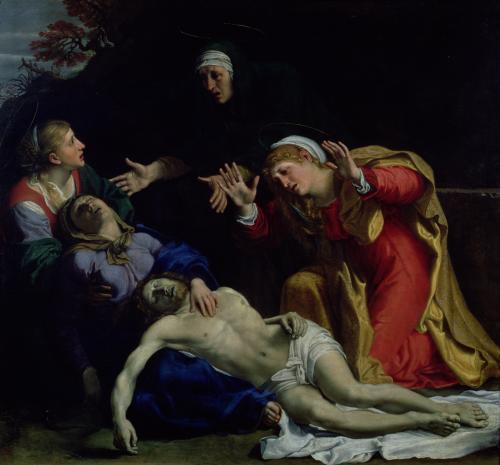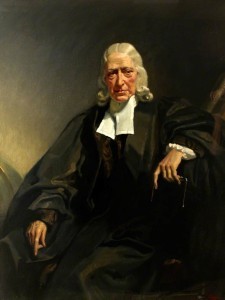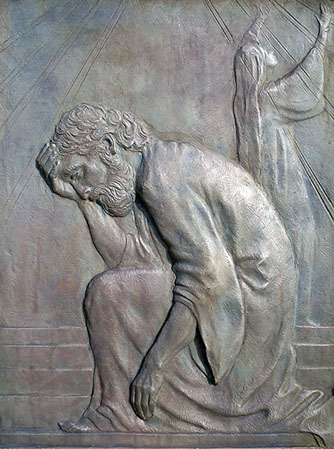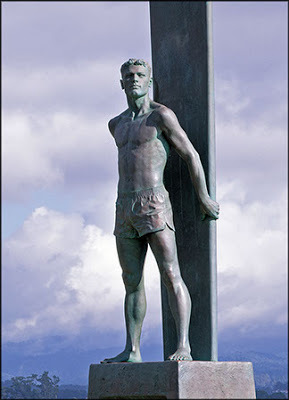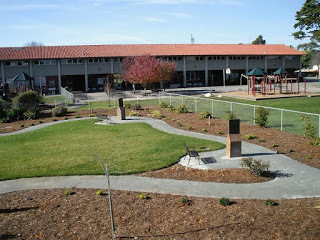David Clayton's Blog, page 9
October 13, 2016
Pilgrimage to the Holy Land for Pontifex University Students, June 22nd – July 4th, 2017
Earn 3-studio credits towards your Masters in Sacred Arts. A pilgrimage to the Holy Land, assisted by priests of the Melkite Church, will be offered in conjunction with the Institute of Catholic Culture. Pontifex University is offering 3 studio credits at Masters level to all those who attend this pilgrimage and submit a paper.
Fr. Sebastian Carnazzo, who teaches three theology courses for the Pontifex University Masters in Sacred Arts is among the primary instructors (he teaches alongside his brother, the Institute of Catholic Culture’s Fr Hezekias Carnazzo!). We will visit many of scripture’s most significant places including: the Mount of Olives, Nazareth, Bethlehem, Jerusalem, and the Jordan River. Seeing and worshiping in these places associated with the prophets, the Apostles, Our Lady and Christ himself will bring the lessons of scripture and the sacraments to life in a profound way. Additionally, this pilgrimage is intended to be an immersion into the liturgy, culture, images, music and architecture of the Holy Land mediated by the local Melkite Church.
 The Melkite Rite, which has its origins in the Middle East, is one of the Byzantine rites of the Catholic Church. The traditions of the Melkite Church reach back to Apostolic times, and bear eloquent witness to the harmonious interplay between Catholic liturgy and the culture of the region in which that liturgy developed.
The Melkite Rite, which has its origins in the Middle East, is one of the Byzantine rites of the Catholic Church. The traditions of the Melkite Church reach back to Apostolic times, and bear eloquent witness to the harmonious interplay between Catholic liturgy and the culture of the region in which that liturgy developed.
Those who wish to transform the culture of the West would do well to learn from this relationship between the liturgy and sacred images and in turn with the broader culture. For more information on the Pilgrimage to the Holy Land view the Brochure here: icc-holy-land-2017-revised-brochure. If you are interested in the Pilgrimage to the Holy Land, download and fill out the registration form here: icc-holy-land-pilgrimage-2017-registration-form-1
The painting above is of Nazareth in the 19th century by David Roberts 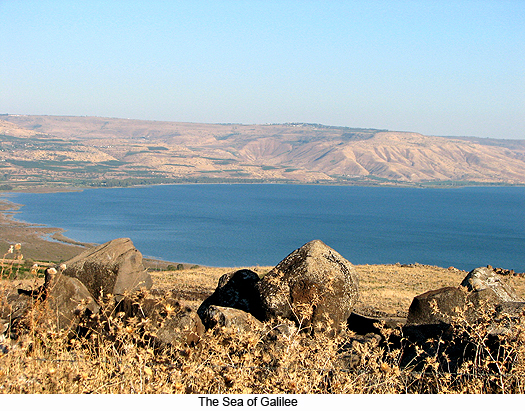

October 4, 2016
Vocations Weekend for Men, 18-40 at Massachussetts Benedictine Monastery
November 4-6, Petersham, Mass.
I have just been sent information about this ‘vocations weekend’ for men. The monastery chants the liturgy in Latin - seven Offices a day and daily Mass. It is a daughter house of a wonderful monastery in northern Scotland, Pluscarden, where I have stayed many times.
September 30, 2016
Podcast at Catholic Exchange on the New Masters in Sacred Arts
I was interviewed recently by Catholic Exchange’s Michael Lichens for their weekly podcast, here is the connection for any who are interested.
http://catholicexchange.com/teaching-way-beauty-david-clayton
September 15, 2016
Series of Weekly Workshops in Berkeley to Help You Discern Your Personal Vocation
Some of you will have read in the past of my account of the guidance I was given to discern my personal vocation and how this enabled me to change direction in life completely and become and artist. You can read about it here.
This is a program of prayer, spiritual exercises and concrete action. Now we are offering this in a series of weekly workshops that take place at 7pm at St Jerome Catholic Church, El Cerrito, CA (near Berkeley, CA). We start this coming Wednesday, September 21st and they are free. We are in the back room of the church hall. The entrance in the back. The workshops are called The Vision For You. We have an even Facebook page here.
I gave a talk at the Insitute of Catholic Culture this past week in which I described the effect that this process of discernement, which I did nearly 30 years ago now, had on my life.
The link to the talk on the ICC website is here
https://instituteofcatholicculture.or...
September 8, 2016
Announcing a Masters in Sacred Arts; A Unique New Program from Pontifex University
Pontifex University opens inaugural enrollment for its affordable and innovative Masters of Sacred Arts degree.
I am delighted to announce a new program for all who wish to contribute to the new epiphany of beauty!
Pontifex University offers a unique approach to higher Catholic education by forming students in the way of beauty so they might renew traditional Catholic culture. Expert faculty including highly respected Catholic artists teach courses online. Regional workshops are planned around the US, Italy and Holy Land, which include special access to the Vatican museum and the restoration workshops as well as an optional graduation Mass in the Vatican.
The Masters of Sacred Arts (MSA) degree is a groundbreaking combination of theory and practice. In addition to the study of theology, philosophy, architecture, film, music and art, students have mentored hands on studio work in drawing, iconography, painting and sculpture. This two-year program is perfect for artists, architects, priests, seminarians, religious, educators, laity, patrons of the arts and anyone looking to create beauty as a sign of hope in today’s world.
Pontifex programs are established on the premise that in all genuine Catholic education, the ultimate Educator is God Himself. As Pius XI stated, the aim of a Christian education is ‘to form the supernatural man who thinks, judges and acts constantly and consistently in accordance with right reason illumined by the supernatural light.’ The goal of Pontifex is to guide students along the path, the Way of Beauty, which leads to the supernatural transformation in Christ, so equipping one to serve Him.
The launching of the MSA program at Pontifex is the culmination of 20 years’ of my own research which began when as a recent convert, I decided to become an artist and couldn’t find anywhere to give me the training I wanted. I had to work it all out for myself. The result of this research became the subject of a book, the Way of Beauty published in 2015 by Angelico Press. I am thrilled now to see this being offered to the next generation which, who knows, might contain a latter-day Van Eyck or Velzaquez!’
The MSA offers the same formation that enabled the great Catholic artists of the past to create works of radiant beauty that are at once noble, elevating and accessible to the many, drawing all to God. Pontifex prepares students to pass the test laid down for artists by Pope Benedict XVI: “It is precisely the test of true creativity that the artist steps out of the esoteric circle and knows how to form his or her intuition in such a way that the others—the many—may perceive what the artist has perceived.”
Pontifex University’s MSA is the new catalyst that shows how to bring these elements together in harmony with one’s personal vocation, whatever it may be, for the glory of God and joy of mankind.
To enrol and sign up for the first class go to www.Pontifex.University
Pontifex University is an authentic Roman Catholic institution formed in 2015 and overseen by a self-perpetuating Board of Trustees that governs the Solidarity Association of the Christian Faithful, a public juridical body established by decree.


September 2, 2016
Do We Need A New Christian Symbolism in Art – Aren’t Pelicans and Peacocks Redundant?
 Should we resurrect the old Christian symbolism? Or are pelicans and peacocks just nonesense, like cabbages and kings.
Should we resurrect the old Christian symbolism? Or are pelicans and peacocks just nonesense, like cabbages and kings.
Is there a danger that trying to reestablish traditional Christian symbols in art would sow confusion rather that clarity? Lots of talks and articles about traditional Christian art I see discuss the symbolism of the iconographic content; for example, the meaning of the acacia bush (the immortality of the soul) or the peacock (again, immortality). This is useful if we have a printed (or perhaps for a few of you an original) Old Master in church or a prayer corner as it will enhance our prayer life when contemplating the image. But is this something that we ought to be aiming to reinstate the same symbolism in what we produce today? Should we seek to educate artists to include this symbolic language in their art?  If symbols are meant to communicate and clarify, they should be readily understood by those who see them. This might have been the case when they were introduced – very likely they reflected aspects of the culture at the time – and afterwards when the tradition was still living and so knowledge of this was handed on. But for most it isn’t true now. How many would recognize the characteristics of an acacia bush, never mind what it symbolizes? If you ask someone today who has not been educated in traditional Christian symbolism in art what the peacock means, my guess is that they are more likely to suggest pride, referring to the expression, ‘as proud as peacock’. So the use of the peacock would not clarify, in fact it would do worse than mystify, it might actually mislead. (The reason for the use of the peacock as a symbol of immortality, as I understand it, is the ancient belief that its flesh was incorruptible). So to reestablish this sign language would be a huge task. We would not only have to educate the artists, but also educate everyone for whom the art was intended to read the symbolism. If this is the case, why bother at all, it doesn’t seem to helping very much, and in the end it will always exclude those who are not part of the cognoscenti . This is exactly the opposite of what is desired: for the greater number, it would not draw them into contemplation of the Truth, but push them out. I think that the answer is that some symbols are worth persevering with, and some should be abandoned. First, it is part of our nature to ‘read’ invisible truths through what is visible. This does not only apply to painting. The whole of Creation is made by God as an outward ‘sign’ that points to something beyond itself to Him, the Creator. Blessed John Henry Newman put it in his sermon Nature and Supernature as follows: “The visible world is the instrument, yet the veil, of the world invisible – the veil, yet still partially the symbol and index; so that all that exists or happens visibly, conceals and yet suggests, and above all subserves, a system of persons, facts, and events beyond itself.” It is important to both to make use of this faculty that exists in us for just this purpose; and to develop it, increasing our instincts for reading the book of nature and in turn, our faith.
If symbols are meant to communicate and clarify, they should be readily understood by those who see them. This might have been the case when they were introduced – very likely they reflected aspects of the culture at the time – and afterwards when the tradition was still living and so knowledge of this was handed on. But for most it isn’t true now. How many would recognize the characteristics of an acacia bush, never mind what it symbolizes? If you ask someone today who has not been educated in traditional Christian symbolism in art what the peacock means, my guess is that they are more likely to suggest pride, referring to the expression, ‘as proud as peacock’. So the use of the peacock would not clarify, in fact it would do worse than mystify, it might actually mislead. (The reason for the use of the peacock as a symbol of immortality, as I understand it, is the ancient belief that its flesh was incorruptible). So to reestablish this sign language would be a huge task. We would not only have to educate the artists, but also educate everyone for whom the art was intended to read the symbolism. If this is the case, why bother at all, it doesn’t seem to helping very much, and in the end it will always exclude those who are not part of the cognoscenti . This is exactly the opposite of what is desired: for the greater number, it would not draw them into contemplation of the Truth, but push them out. I think that the answer is that some symbols are worth persevering with, and some should be abandoned. First, it is part of our nature to ‘read’ invisible truths through what is visible. This does not only apply to painting. The whole of Creation is made by God as an outward ‘sign’ that points to something beyond itself to Him, the Creator. Blessed John Henry Newman put it in his sermon Nature and Supernature as follows: “The visible world is the instrument, yet the veil, of the world invisible – the veil, yet still partially the symbol and index; so that all that exists or happens visibly, conceals and yet suggests, and above all subserves, a system of persons, facts, and events beyond itself.” It is important to both to make use of this faculty that exists in us for just this purpose; and to develop it, increasing our instincts for reading the book of nature and in turn, our faith.  However, coming back to the context of art again, some discernment should be used, I suggest. I would not be in favour of creating an arbitrarily self-consistent symbolism. The symbol must be rooted in truth. The symbolism in the iconographic tradition is very good at following this principle. This is best illustrated by considering the example of the halo. This is very well known as the symbol of sanctity in sacred art. There are very good reasons for this. The golden disc is a stylized representation of a glow of uncreated, divine light, shining out of the person. Even if this were not already a widely known symbol, it would be worth educating people about the meaning of it, because in doing so something more is revealed. When however, the representation of a halo develops into a disc floating above the head of the saint, as in Cosme Tura’s St Jerome, or even a hoop, as in Annibale Caracci’s Dead Christ Mourned, (both shown) then it seems to me that the symbol has become detached from its root. Neither could be seen as a representation of uncreated light. These latter two forms, therefore, should be discouraged.
However, coming back to the context of art again, some discernment should be used, I suggest. I would not be in favour of creating an arbitrarily self-consistent symbolism. The symbol must be rooted in truth. The symbolism in the iconographic tradition is very good at following this principle. This is best illustrated by considering the example of the halo. This is very well known as the symbol of sanctity in sacred art. There are very good reasons for this. The golden disc is a stylized representation of a glow of uncreated, divine light, shining out of the person. Even if this were not already a widely known symbol, it would be worth educating people about the meaning of it, because in doing so something more is revealed. When however, the representation of a halo develops into a disc floating above the head of the saint, as in Cosme Tura’s St Jerome, or even a hoop, as in Annibale Caracci’s Dead Christ Mourned, (both shown) then it seems to me that the symbol has become detached from its root. Neither could be seen as a representation of uncreated light. These latter two forms, therefore, should be discouraged.
Similarly, those symbols that are rooted in the gospels or in the actual lives of the saints should be encouraged and the effort should be made, I think, to preserve or, if necessary, reestablish them. The tongs and coal of the prophet Isaias relate to the biblical accounts of his life. The inclusion of these, will generate a healthy curiosity in those who don’t know it, and so might direct them to investigate scripture. The picture shown, is one of my own icons.

In contrast consider the peacock and the pelican. The peacock, as already mentioned, does not, we now know, have incorruptible flesh. The pelican is a symbol of the Eucharist based upon the erroneous belief in former times that pelicans feed their young with their own flesh. My first though is that these symbols should not be used should not be used, because the reason for their symbolism in invalid, given that we no longer believe it to be true. However, I will admit that I am torn by the fact that both of these are beautiful and striking images, even if based in myth. Also, it might be argued, and this is particularly true for the pelican, that to use it is not resurrecting an obscure medieval symbol. It is an ancient symbol certainly – and St Thomas Aquinas’s hymn to the Eucharist, Adore te devote called Christ the ‘pelican of mercy’. But it lasted well beyond that. It was very widely understood even 50 years ago. Awareness of it is still common nowadays amongst those who are interested in liturgy and sacred art. Perhaps an argument could be made that even when the reason for the use of symbol is based in myth, if that is known and understood, and when that symbol recognition is still widespread enough to be considered part of the tradition, it should be retained. We should also remember that modern science is not infallible, and we moderns could be those who are mistaken about the pelican! My Googling research (admittedly even less reliable than modern science) revealed that the coat of arms of Cardinal George Pell has the image of the pelican. If this is so, I imagine he would have something to say about the issue also!
August 31, 2016
The Solving of a Mystery in the Lindisfarne Gospels
Some time ago I wrote a piece about the St Matthew of the Lindisfarne Gospels. Here. The image is painted by Br Eadrith and was done in the 8th century.
At the time I was unsure as to who the figure peeping from behind the curtain might be:
Now, a year later a reader, Rev Dan Bodine wrote to me saying:
The most obvious candidate in my view is St. Luke. The gospels of Matthew and Luke share much of the same material. The painting would therefore accuse Luke as listening in on the Divine Word as Matthew receives it. (Who wouldn’t)
So, mystery solved…unless anyone has any more suggestions…
August 24, 2016
The Power of the Divine Office in the Transformation of a Church?
I was investigating forms of the breviary on the internet the other day (as one does!) and came across a page about the history of the Anglican breviary, here.
Regular praying of the Divine Office was likewise central to John and Charles Wesley’s “method,” which included scriptural study, fasting, and regular reception of Holy Communion in addition to daily celebration of Morning and Evening Prayer. John Wesley’s Rule of Life is, in its essentials, thoroughly orthodox and Catholic. It has been said that if Wesley had only been born in 1803 rather than 1703, he would have been a follower of those great Oxford divines — John Henry Newman, Edward Bouverie Pusey, and Hurrell Froude — who by their preaching and Tracts turned the Church of England to its apostolic and sacramental roots.
Indeed, it was those 19th century “Tractarians” who kindled new interest in the pre-Reformation forms of celebrating the Holy Eucharist and daily prayer. In the mid and late nineteenth century, the Anglican Church in England and America witnessed nothing less than a Catholic Revival, including the rebirth of organized religious orders, renewed emphasis upon and appreciation for the Episcopate and Priesthood, the Sacraments, the Real Presence of Christ in the Eucharist, the sacrificial nature of the Holy Communion, devotion to the Blessed Virgin and the Saints, and the Church as the Mystical Body of Christ.
As someone who grew up going to Methodist church and whose great grandfather was a Methodist lay preacher, I found this staggering. I had heard about John Wesley’s ‘method’ that gave the name to the Methodists, but no one every talked about what it actually was.
Clearly as a Catholic I do not now believe that Methodists and high Anglicans actually had the Real Presence at the heart of their churches, but it does suggest, if the writer of the history referred to above is correct, that so much of the strength of these two church movements was down to a devotion to the Divine Office. It was said, for example, that it was the rise of the Methodists in England that stoppedsocial upheaval of the sort that lead to the French Revolution. The Anglican church was responsible, in my opinion for the gothic revival which shaped the culture of the 19th century in Britain and America so strongly (as I described in a recent article, here) Given the absence of the Real Presence this is testament to the power of what authentic liturgy they had, to transform lives and society nevertheless.
It does make me wonder, also, if it is the lack of adherence to the true Method today, perhaps, that has contributed to the decline of the Methodists that is so marked in England.

This reinforces the belief that I have that if we want to transform the culture and revive the Church it could happen through the Domestic Church and the family centred on liturgical piety that involves the chanting of the Liturgy of the Hours at home. Furthermore this means that we need to encourage it in the vernacular, so that people who are not fluent in Latin (ie most people) can genuinely pray it. I suggest that the Anglican Use Divine Office is a way to do this (as I described in a review of the Customary of Our Lady of Walsingham).
August 23, 2016
Postscript to Recent Post: Sketches of Thomas Marsh’s Rosary Walk
Thomas Marsh, the sculpture, was kind enough to get in touch with me after the post about his work to tell me a little more about the Rosary Walk referred to in yesterday’s post about his work. He even sent me some sketches he has produced in advance of creating it, along with a description of his intentions for the church, St Isadore the Farmer Catholic Church in Orange, Virginia.
I thought that it was worth a look to see how a sculptor describes his vision in advance, both in words and in preparitory sketches:
When completed, the Rosary Prayer Walk, with an over life-size statue of Mary and the Child Jesus at the high point of the walk, will span just over 75 feet. This sacred and beautiful space will beckon those who for the first time notice the statue as they drive by the front of St. Isidore on Highway 15. It will be a magnet for those who attend Mass at St. Isidore, and for those Catholics in the region who hear about this new sacred space. What will be this beckoning force, this magnetic attraction?
In his book, The Spirit of the Liturgy, Pope Benedict XVI wrote of the “exitus-reditus” (movement outward and returning) character of worship. He likened this movement to man’s experience of God, of leaving and returning, and ultimately returning home to God forever. In this prayer walk, the Rosary is laid out before the prayerful person as an elliptical path, to descend down the gentle slope of the hill, and return upward, homeward. In the manner of Christ one climbs the slope of the hill, not only in sight of the Cross (held by the Child Jesus), but toward the sculpture of Mary, Queen of Heaven, and Christ, King of the Universe, a reminder of our heavenly home. As the high point and focal point of the design, the sculpture has a symbolic and representational power to draw us “…to adoration, to prayer, and to the love of God…” (CCC 2502).
The Rosary has the potential to be experienced as movement in a large space. Usually the “small scale” practice of praying the Rosary, the traditional beads with the very physical sense of touch, offers an intimate quietness, a quiet closeness. Yet Christ often went to the mountain, to the “high place” to pray. There is an expansiveness of sight and breath, and a special depth when there are great vistas surrounding one’s prayer experience. Our Rosary prayer walk will offer such an expansive experience. The rich and fertile beauty of the rolling rural Orange County vistas, with their seasonal colors and atmospheric variety, invite one to engage such a space in prayer. To wed the Rosary with this spatial beauty has the potential to provide a profound prayerful experience, a special path to God.
On a “practical” level, there are pressing contemporary issues which so often manifest in the assault of secular culture on Christianity. We know that praying the Rosary is one of our great strengths in combatting these assaults in our trying times. What a tremendous force for good would be the praying of the Rosary on this fully human scale: one decade, ten natural steps, repeated, culminating in petitioning the Queen of Heaven as intercessor to the King of the Universe! Hail Holy Queen, Mother of Mercy! And what a natural evangelization this would be for those who are not Catholic but notice this sculpture from the highway, and wonder, “What is this about?”
Our Rosary Prayer walk with its sculpture of Mary and the Child Jesus will create a sacred site, filled with beauty, to add to the wonderful landscape adjacent to St. Isidore Catholic Church. Beauty will beckon, and the attraction will pull us closer to God.
In case, you think the sketches look rough, here is a reminder of what the quality of the finished work will be like – relief sculpture of one of the meditations upon the Sorrow of St Joseph.
August 19, 2016
Further thoughts on the sculpture of Thomas Marsh
Demonstrating how to balance the idealism and realism
After Carrie Gress’s interview with sculptor Thomas Marsh on the Pontifex University blog, here, which I referred to last week, I thought I would enlarge on my comments on Marsh’s sculpture. Marsh is one of the few artists I have seen who has a high level of skill and who seems to understand how to balance idealism and realism. This really should be something that every Christian artist should understand, but seem to nowadays. What is noticeable is that he varies the degree of idealization according to the subject of his scultpture. Here’s what I mean:
First is that I think the quality of his craftmanship comes through in his portraits, which in my opinion are stunning. The individual character of the person shines out of his work. Here are some examples.
The mark of a unique person is present, though slightly reduced, in this sculpture of a surfer, which is not intended to be a portrait, but an idealized personification of a surfer, and a tribute to surfing. Again, this is skillfully rendered.
Contrast this with the face of Our Lady shown below, in which the idealization is taken a step further:
Notice how the portrayal of individual character is least evident here. The face is idealized in a way that partially resembles, it seems to me, the idealized features of an ancient Greek Venus. Any portrayal of Our Lady must reveal her as a unique person, as a portrait does, of course. We discern the general through the particular. But at the same time, it must emphasize those qualities that are common to all of humanity, and present them in their best light, for these are the qualities that we can emulate in her. Those aspects that are unique to Mary cannot, by definition, be imitated. It is this emphasis of the general that leads the artist into a portrayal of an idealized form in sacred art. The exact nature of that idealization can vary – in the iconographic tradition it is different from classical naturalism. But it must be there.
The degree of idealization is slightly less in the surfer, because he is meant to portray not those aspects that are common to all people, but rather those aspects that are common to all surfers when they are presented in their best light.
Another wonderful example of sacred art by Marsh is this relief sculpture: “Sorrow 1″ from the Seven Sorrows and Joys of St. Joseph, a meditation which is very beloved by the Oblates of St. Joseph,(see osjusa.org) a small religious order devoted to “serving God in imitation of St. Joseph.” Sorrow 1″ is part of a 2006 landscape architectural prayer walk (co-designed by March) on the grounds of the Oblates’ U.S. provincial headquarters in Santa Cruz:
Relief sculpture is, one might say, not a representation of the form directly, but a painting in shadow. Here is a picture of the Sorrow Walk:
In the interview Marsh refers to a commission he is about to begin for a series of statues for a Rosary walk. I look forward to seeing it completed.
David Clayton's Blog
- David Clayton's profile
- 4 followers






